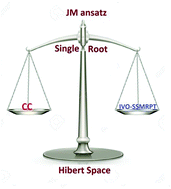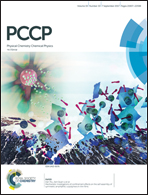A simplified ab initio treatment of diradicaloid structures produced from stretching and breaking chemical bonds
Abstract
The present investigation reports on the prospect of using state specific multireference perturbation theory (SSMRPT) with an improved virtual orbital complete active space configuration interaction (IVO-CASCI) reference function (IVO-SSMRPT) to generate potential energy surfaces (PESs) for molecular systems [such as CH4, C2H6, C2H4, H2O2, LiH, and KN] by stretching and breaking of suitable bonds with modest basis sets. We have also revisited the dissociation energy profile of triplet ketene which exhibits a step-like structure in the observed rate. The application of the method has also been made to the ionization energies of H2O. Although the perturbative corrections are obtained by the diagonalization of the effective Hamiltonian, in IVO-SSMRPT, only one physically relevant solution is achievable. It is parameter free and does not require any threshold to avoid the intruder problem. It is strictly size-extensive and size-consistent provided that local orbitals are used. The PESs obtained with our approach are smooth all along the reaction path. Our estimates are in close agreement with the available reference data indicating that IVO-SSMRPT is a robust paradigm for the accurate computation of ground, excited and ionized states as it captures the mutual inter-play of different flavors of correlation effects in a balanced and accurate way.



 Please wait while we load your content...
Please wait while we load your content...